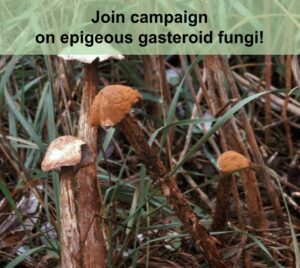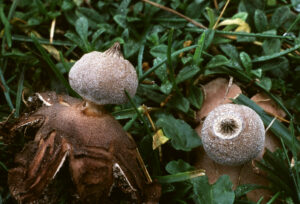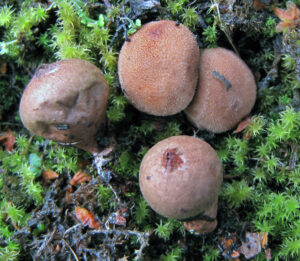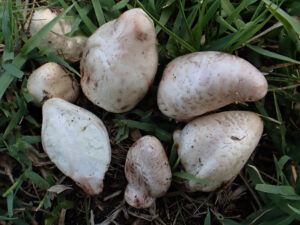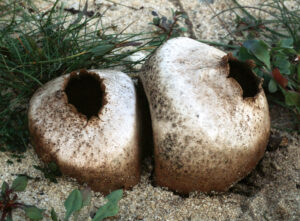Most wanted epigeous gasteroid fungi
What are epigeous gasteroid fungi?
Gasteroid fungi produce spores inside fruiting bodies instead of on the outer surface as is the case with gilled mushrooms. Due to their appearance, these fungi were previously placed in the class Gasteromycetes, but it is now known that this taxon groups species that are not closely related. Epigeous gasteroid fungi are those gasteroid fungi that produce fruiting bodies above the ground. They occur in different orders within Agaricomycetes: Agaricales, Boletales (puffballs), Geastrales (earthstars), and Phallales (stinkhorns).
You can learn more on this campaign from the materials below.
Why are epigeous gasteroid fungi important?
The epigeous gasteroid fungi are currently under assessment for the European IUCN Red List. While these genera can be easily recognized, several species belonging to these genera are understudied, very rarely recorded, and lacking DNA sequence data. An increase in both collected specimens and recorded observations could highly improve our understanding of ecology and distribution of those species.
What do we mean by “most wanted epigeous gasteroid fungi”?
Here is the list of 29 target species for the 2024 sampling campaign to support the evaluation of gasteromycetes for the European IUCN Red List:
- Battarrea phalloides
- Bovista graveolens
- Bovista hollosii
- Bovista paludosa
- Bryoperdon acuminatum
- Calvatia fragilis
- Chlorophyllum agaricoides
- Dictyocephalos attenuates
- Geastrum britannicum
- Geastrum lageniforme
- Geastrum melanocephalum
- Geastrum morganii
- Geastrum parvistriatum
- Geastrum pouzarii
- Geastrum pseudostriatum
- Geastrum senoretiae
- Lycoperdon caudatum
- Lycoperdon echinatum
- Lycoperdon ericaeum
- Lycoperdon mammiforme
- Lycoperdon radicatum
- Lycoperdon rimulatum
- Lycoperdon rupicola
- Lycoperdon subincarnatum
- Schenella pityophila
- Schenella simplex
- Scleroderma septentrionale
- Tulostoma lloydii
- Tulostoma simulans

